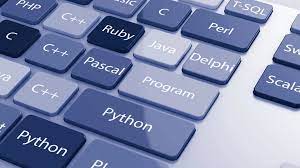Python and R are two commonly used programming languages in the field of analytics and data science. They offer powerful libraries, tools, and frameworks that support data manipulation, statistical analysis, machine learning, and data visualization. Here’s an introduction to Python and R in the context of analytics:
Python:
Python is a versatile, general-purpose programming language known for its simplicity, readability, and vast ecosystem of libraries. It has gained significant popularity in the data science community due to its extensive support for analytics tasks. Some key features of Python for analytics include:
- Libraries: Python offers several widely used libraries for data manipulation (e.g., pandas), numerical computing (e.g., NumPy), data visualization (e.g., Matplotlib, Seaborn), and machine learning (e.g., scikit-learn, TensorFlow, PyTorch). These libraries provide comprehensive functionality and are actively maintained by the Python community.
- Easy to Learn and Use: Python has a clean and readable syntax, making it beginner-friendly and conducive to collaborative development. Its simplicity allows analysts to quickly prototype and iterate on ideas.
- Data Manipulation: The pandas library in Python provides powerful data structures and data manipulation functions, enabling efficient data cleaning, transformation, aggregation, and analysis. It supports handling structured, tabular data similar to spreadsheets or databases.
- Statistical Analysis: Python has libraries like SciPy and statsmodels that offer a wide range of statistical functions and models for hypothesis testing, regression analysis, time series analysis, and more. These libraries provide capabilities for conducting statistical tests, estimating parameters, and performing exploratory data analysis.
- Machine Learning: Python’s ecosystem includes robust machine learning libraries such as scikit-learn, which provide a wide range of algorithms for tasks like classification, regression, clustering, and dimensionality reduction. Additionally, deep learning frameworks like TensorFlow and PyTorch enable building and training complex neural network models.
R:
R is a programming language specifically designed for statistical computing and graphics. It has a strong focus on data analysis and provides a rich set of packages and functions tailored for statistical modeling and visualization. Key characteristics of R for analytics include:
- Comprehensive Statistical Packages: R comes with a vast collection of statistical packages, such as the core stats package and specialized packages like dplyr, tidyr, ggplot2, and caret. These packages offer extensive functionality for data manipulation, visualization, statistical modeling, and machine learning.
- Data Manipulation: R provides powerful data manipulation capabilities through packages like dplyr and tidyr. These libraries enable efficient data cleaning, filtering, aggregation, and transformation operations, similar to pandas in Python.
- Statistical Modeling: R is known for its extensive support for statistical modeling. It offers a wide range of packages for linear regression, generalized linear models, time series analysis, survival analysis, and more. Popular packages include statsmodels, survival, and lme4.
- Data Visualization: R’s ggplot2 package is widely recognized for its elegant and flexible grammar of graphics, allowing users to create visually appealing and customizable plots. R also provides other visualization packages, such as lattice and ggvis, which offer additional options for data exploration and presentation.
- Reproducible Research: R has built-in support for reproducible research through tools like R Markdown and knitr. These tools enable the creation of dynamic documents that combine code, data, analysis, and visualizations, making it easier to share and reproduce analyses.
Both Python and R have their strengths and are widely used in the analytics and data science community. The choice between the two often depends on personal preference, specific project requirements, existing infrastructure, and the availability of domain-specific packages and expertise. Many analysts and data scientists use a combination of both languages to leverage the strengths of each in their workflows
